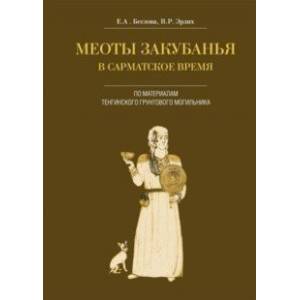Meat of Zakuban in Sarmatian times (based on the materials of the Tenginsky Group burial ground)
Please sign in so that we can notify you about a reply
The Tenginsky soil burial ground, located on the western outskirts of the village of the same name, was studied by the Caucasian archaeological expedition of the East Museum from 1994 to 2003.
More than 300 complexes were excavated: burials, kenotaphs, horse graves, ritual complexes. Among the latter, a altar with massive human and horse sacrifices, a triple platform, which was repeatedly used for sacrifices, were first discovered for the first time. The burial of a young woman-giritsa is unique to Meot culture.
The long -term existence of the burial ground, the multiplicity and representativeness of funeral equipment made it possible to create a chronological scale from the middle of the 3rd century. BC. Until the middle of the II century. N.E.
The materials obtained make the Tengins burial ground a valuable source on the history, culture and chronology of the Meotian archaeological culture of the Zakuban
More than 300 complexes were excavated: burials, kenotaphs, horse graves, ritual complexes. Among the latter, a altar with massive human and horse sacrifices, a triple platform, which was repeatedly used for sacrifices, were first discovered for the first time. The burial of a young woman-giritsa is unique to Meot culture.
The long -term existence of the burial ground, the multiplicity and representativeness of funeral equipment made it possible to create a chronological scale from the middle of the 3rd century. BC. Until the middle of the II century. N.E.
The materials obtained make the Tengins burial ground a valuable source on the history, culture and chronology of the Meotian archaeological culture of the Zakuban
Author:
Author:Erlich Vladimir Roaldovich
Cover:
Cover:Hard
Category:
- Category:Arts & Photography
- Category:Politics & Social Science
- Category:Reference books
ISBN:
ISBN:978-5-4469-1340-4
No reviews found
